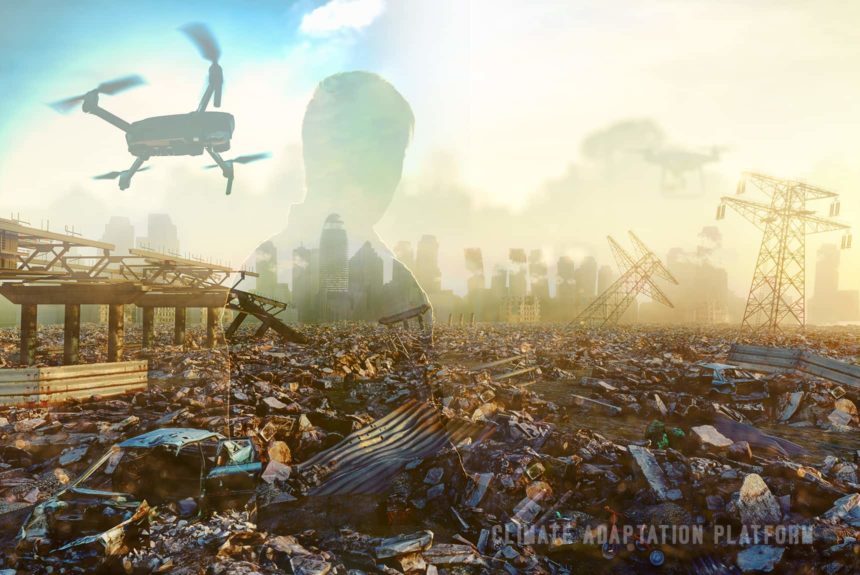The term “drone” typically refers to any unpiloted aircraft, also known as Unmanned Aerial Vehicles (UAVS). Drones carry out impressive tasks that range from military operations and surveillance to mapping, photojournalism, sensing capabilities, capturing photos and videos, and even delivering packages.
Many sectors, from farming, chemicals, conservation, construction, filling, mining, oil and gas, sewer maintenance, and many others, have benefited from drones.
Drones are also increasingly used in disaster management and emergency response applications. Governments and stakeholders have increasingly relied on drones to survey areas impacted by disasters and monitor the progress of emergency and recovery.
Every year, disasters claim 60,000 lives, affect hundreds of millions of people, and cost billions of dollars in damages.
A study published in Remote Sensing Environment examined over 600 studies on the application of drones during disasters worldwide to identify gaps in disaster management applications, technology, and geography, which could become the subject of future research.
During disasters, drones have four main uses: for mitigation, preparedness, response, and recovery. The majority of the studies, or 87%, used drones for mitigation and recovery-related activities, including vulnerability assessment, risk modelling, and environmental recovery. Drones were also used to examine topography to identify high-risk areas for landslides, floods, and earthquakes.
However, when it comes to response-related research, drone application in this area is lacking. Researchers identified only 16 studies that utilised drones for data collection during the emergency phase, which they believe undercuts the full potential of drones to generate real-time and on-demand information to support disaster response.
Researchers attribute the limited use of drones to gather real-time information during disasters to the real-world challenges of flying drones during emergencies, where adverse weather conditions and the safety of first-response aircraft are at risk.
For example, when drones collide with a firefighting aircraft during a bush or forest fire, it could lead to a deadly incident and a costly fine for the person operating the drone.
The study also finds a small application of drones in the following disasters: earthquakes (14%), floods (18%), and storms (12%). In comparison, 38% of the studies utilised drones in the context of landslides and other mass movements.
Additionally, regarding the area and duration of drone coverage, 76% of the studies utilised drones to survey areas of less than one square kilometre, and 70% of the studies employed drones for durations of less than 30 minutes.
When it comes to countries that often employ drones, researchers find that 64% of the studies were conducted in wealthy countries, despite lower-income countries being more vulnerable and affected by disasters.
Additionally, when considering the use of drones in rural versus urban areas, 79% of the studies were conducted in rural areas, which is likely due to the challenges of obtaining flight approvals in cities. Researchers note that the impacts of disasters are more severe in urban areas, where assets and people are more concentrated.
Based on the researcher’s review of existing research, they have made the following recommendations:
“future studies should focus on: earthquakes, floods, and cyclones and other windstorms due to higher loss of life and economic impacts; larger and urban study areas in low, lower-middle, and upper-middle-income countries and territories to support vulnerable populations; under-demonstrated (and especially response-related) disaster management activities, which generally require observations of built features from urban environments; and data standards for integrating drone-based remote sensing with international disaster management methodologies.”
To read the entire research, click the link below.
Source:
Kucharczyk, M. & Hugenholtz, C. (2021, October). Remote sensing of natural hazard-related disasters with small drones: Global trends, biases, and research opportunities, Remote Sensing of Environment. Volume 264,2021, 112577, ISSN 0034-4257. Retrieved from https://doi.org/10.1016/j.rse.2021.112577



Leave a Reply